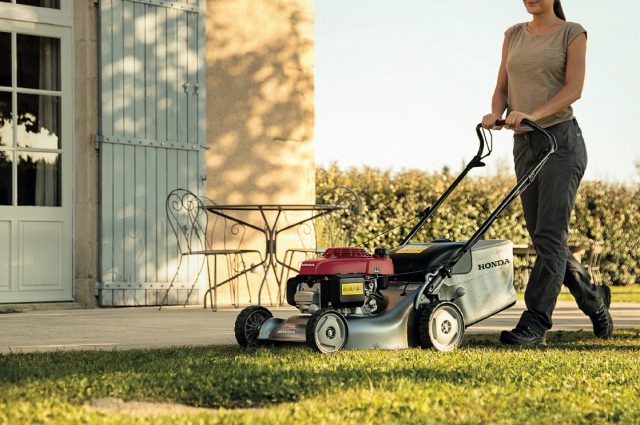Looking After the Lawn
A lush, green lawn is an object of desire for anyone who has a garden. In effect, a healthy expanse of turf enhances the appearance of open spaces surrounding a home. Like plants and flowers, any lawn requires tending and treating continuously: and with a little effort, it can be kept in perfect shape, year in and year out. So here is a quick guide to the more important jobs that need doing through the course of the year to ensure proper upkeep of the lawn.
Mowing
Cutting the grass is not just an enjoyable pastime. It is also an operation absolutely essential to the health of the lawn:
mowing must be done at the right time, in the proper way and using suitable equipment. It is important to remember that mowing — which should wait until the winter is definitely over — must be done frequently, to favour new growth: every 10-15 days at first, then once a week or thereabouts (right through the summer). For ornamental lawns, the height of the grass should be, on average, about 3 cm in spring and autumn and 5 cm in summer.
Watering
It is important that the turf receives the right amount of moisture at all times during the year, as dictated by the weather conditions and the nature of the soil.
Fertilization
The soil is not an inexhaustible reservoir of nutrients, and will be impoverished further by mowing: fertilizers are essential as a means of restoring nutrient substances to the soil, It is important to select products specifically for lawns, enabling a slow release of nitrogen and preferably mineral-organic in formulation. The lawn should be fertilized regularly all the year round, except in winter, selecting the products best suited to each respective period. Always keep to the dosages indicated, and be careful to spread the product uniformly.
Controlling weeds and moss
Weeds not only degrade the appearance of a lawn, they also cause damage. The remedies to adopt will depend on the type of weeds: having identified the problem, consult a specialist, who will be able to indicate the weedkillers best able to combat the situation. Moss grows on damp soils, wherever moisture tends to linger. The ideal solution would be to prevent its growth by digging and working peat or silver sand into the soil before seeding, to create a soft and permeable bed. Where moss has taken hold, on the other hand, the soil needs to be treated with suitable products, such as ferrous sulphate; having removed the dead moss, make holes in the soil, spread sand and peat, and apply a complex fertilizer to revive the turf.






